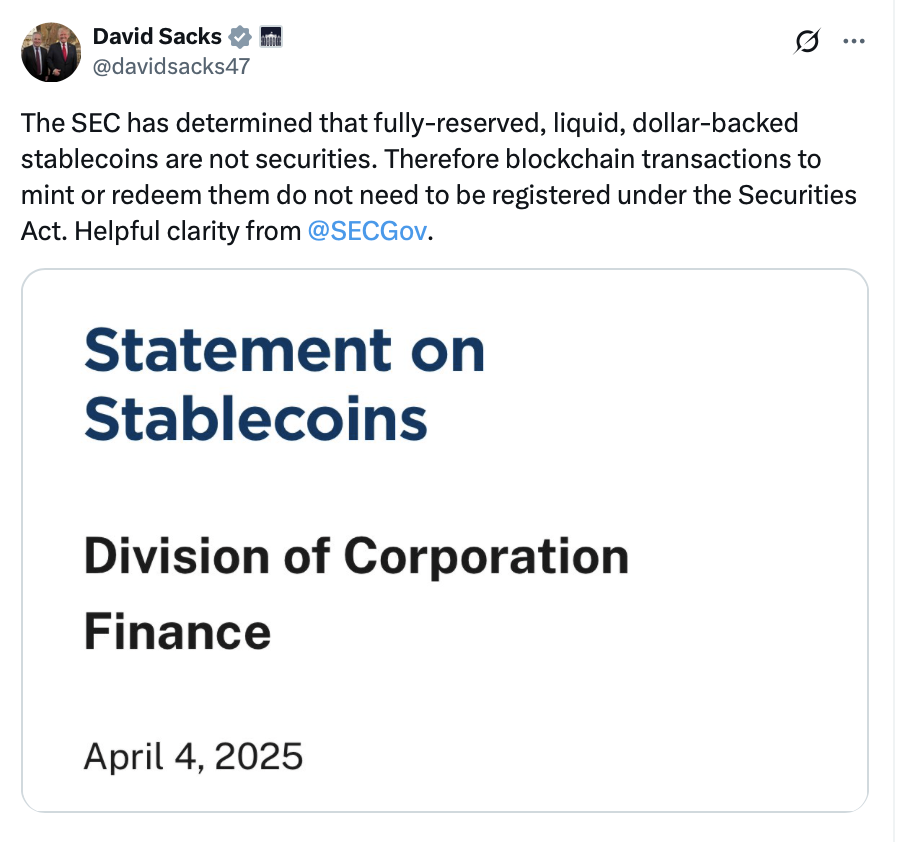Caroline Crenshaw, a commissioner known for her critical stance on cryptocurrency, has claimed that the US regulatory body is minimizing risks and misrepresenting the stablecoin market in its recent guidelines.
Despite her concerns, many within the crypto community view the SEC’s decision as a progressive move.
In a statement made on April 4, Crenshaw, who has consistently voiced her opposition to spot Bitcoin ETFs, indicated that the SEC’s remarks on stablecoins were riddled with “legal and factual inaccuracies that misrepresent the USD-stablecoin market and significantly downplay its risks.”
Crenshaw’s Concerns, Industry Encouragement
The new SEC guidelines classify stablecoins that fulfill specific criteria as “non-securities,” releasing them from transaction reporting requirements.
Crenshaw challenged the validity of the SEC’s analysis that led to this classification, contesting their claims regarding issuer actions that are said to “stabilize price, ensure redeemability, and mitigate risk.”

Source: David Sacks
The SEC noted that “although briefly, some USD-stablecoins are accessible to retail buyers only through intermediaries and not directly from the issuer.”
Crenshaw contended that this characterization is misleading, stating:
“It is generally the case, rather than the exception, that these coins are made available to the retail market solely via intermediaries who transact them in the secondary market, including crypto trading platforms.”
“Over 90% of circulating USD-stablecoins are distributed this way,” she further explained.
In contrast, many in the cryptocurrency sector expressed optimism regarding the SEC’s recent decision.
Ian Ballina, founder of Token Metrics, described the move as a “clear step towards addressing key issues in the crypto realm.”
Positive Outlook from Crypto Sector, but Delayed
Tan Tran, CEO of Vemanti, expressed a desire for the SEC to have reached this conclusion three years ago, while Ian Kane, head of partnerships at Midnight Network, remarked that it “signals progress for those in crypto striving to operate within the rules.”
Crenshaw argued that the SEC’s reassurance that an issuer can accommodate unlimited redemptions simply because their reserves match or outstrip the supply is “also grossly misleading.”
“The overall financial stability and creditworthiness of the issuer cannot be assessed solely based on the value of their reserves, which do not reflect their liabilities, risks associated with proprietary financial activities, and more,” Crenshaw pointed out.
She emphasized that stablecoins inherently carry risks, especially during market declines.
This discussion arises just weeks after reports surfaced that stablecoin issuer Tether was allegedly collaborating with a major accounting firm to audit its asset reserves and confirm that its USDT stablecoin is backed at a 1:1 ratio.
On March 22, it was reported that Tether’s CEO, Paolo Ardoino, believed the audit would be less complicated under a pro-crypto administration.
Magazine: XRP win leaves Ripple a ‘bad actor’ with no legal precedent set in crypto
